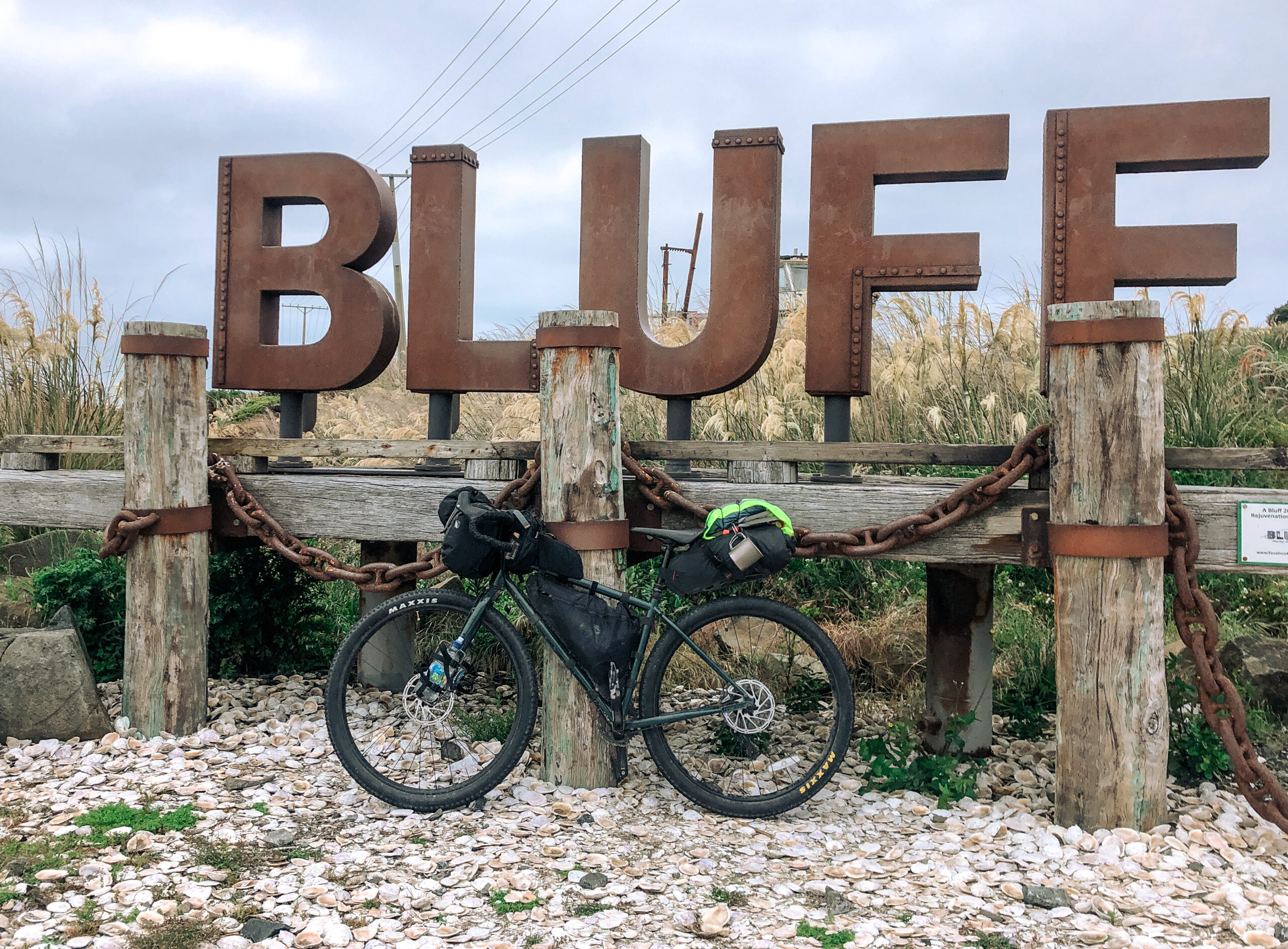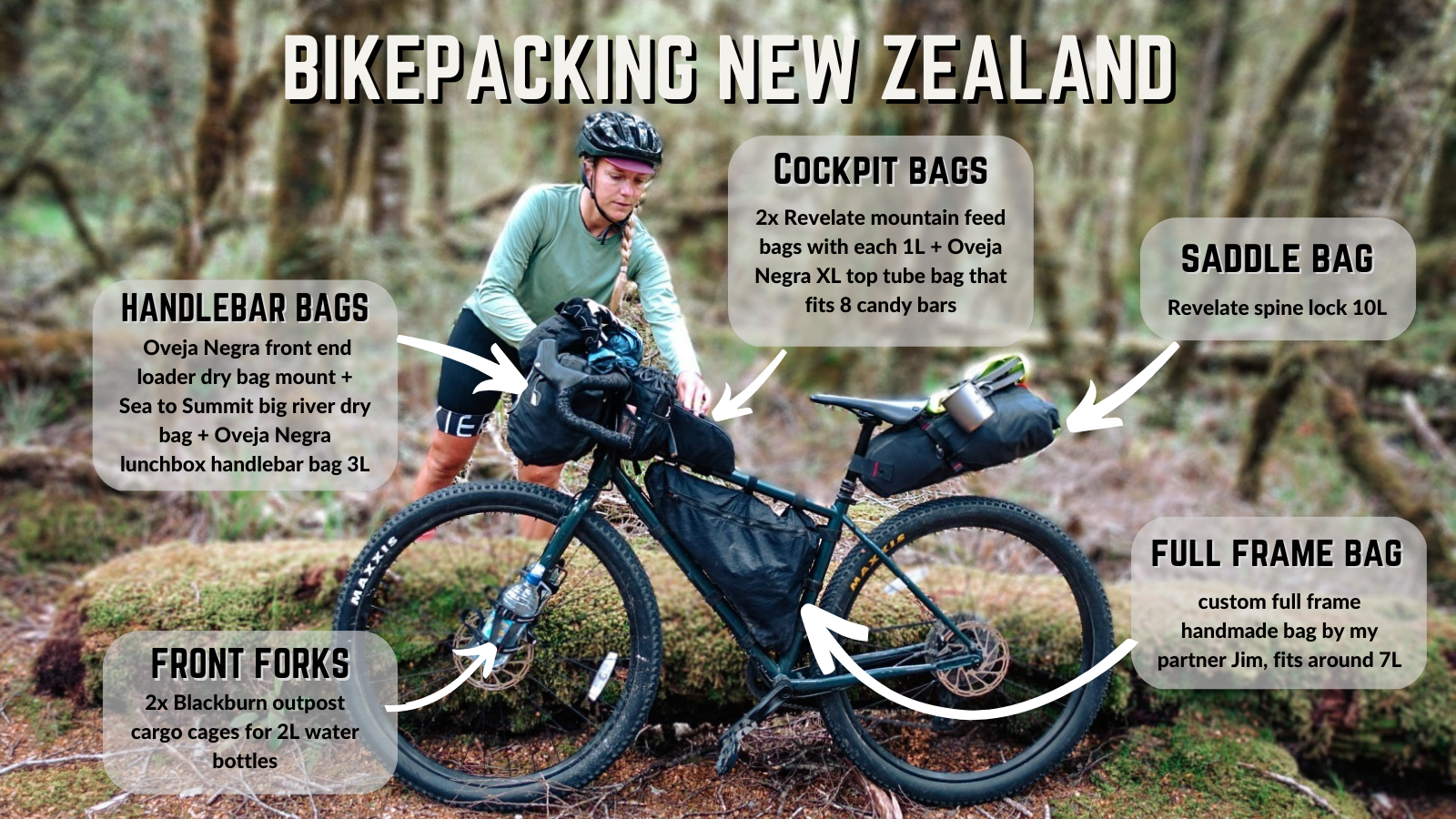
By Ambassador McKenzie Barney
The following is an ode to the bicycle-tourist gone bikepacker transition, unraveled in a progression of bicycle, gear, and mindset shifts. But in order to explain one long-distance self-supported voyage, I’ll have to go back to the beginning…
This story starts seven years ago when New Zealand stole my heart. The islands in the middle of the Pacific Ocean had just opened the world’s newest thru-hike, and I dared to walk its footpath. The only thing was that I had never embarked on a multi-month trail like it before, and this trip would last five months. Enduring the unknown became the staple of my trip, and I gathered a group of kindred wayfarers who gravitated toward the uncertainty and simplicity of walking in the wilderness with a backpack loaded with food, water, and shelter. Together we walked from the top (Cape Reinga) to the bottom of the country (Bluff) and made a documentary along the way. My life, as far as I knew it, had changed course. I spent the next seven years in pursuit of more human-powered endeavors, winding my way through dirt paths of the Pacific Crest Trail, Chile’s Patagonian region, Nepal and India’s Himalayas, and eventually transitioning from foot power to pedal power with my first novice bikepacking trip up the length of Vietnam. I was hooked and began scheming for the next chapter: biking the length of continents. A solo journey from Turkey to the Netherlands for six weeks gave me the confidence and warm-up for the grand voyage that my partner, Jim, joined me on: cycling the length of Africa. For five months we rode from Cairo to Cape Town, weaving our way down ten countries. Traveling by bike we pushed off from the ancient pyramids of Egypt, endured a military coup in Sudan, navigated war-stricken Ethiopia, had a spear thrown at us in tribal regions of Kenya, pedaled along a Mt Kilimanjaro backdrop in Tanzania, swam to the dangerous edge of Zambia and Zimbabwe’s Victoria Falls, nearly avoided an African elephant ambush in Botswana, roamed one of the world’s highest sand dunes in Namibia, and finished our southbound ramble at Cape Town in South Africa.
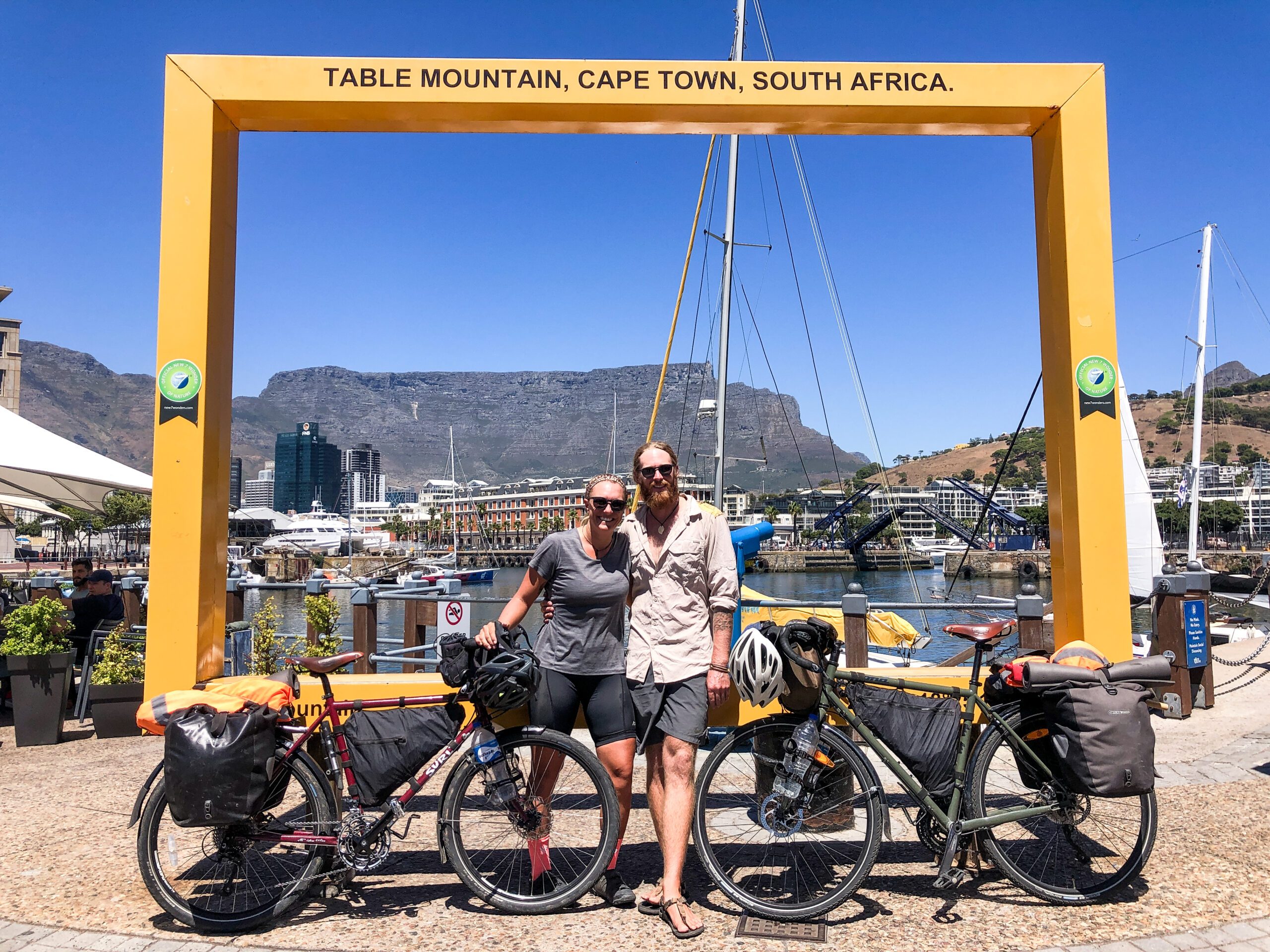
Now I’m back to where it all started. After the Europe and Africa bikepacking trips, I had officially caught the two-wheeled expedition bug. It only seemed fitting to point my wheels toward the terrain that sparked my adventurous path and opened the door to a new way of traveling and seeing the world. My partner Jim is from Christchurch, so when we decided to head to the South Island for the holiday, I carved out a two-week window for a bike voyage. Starting in Picton, at the top of the South Island, my plan was to meander 1,500 kilometers down to Bluff at the bottom. While I biked the Land of the Long White Cloud, Jim chose the solitude of fly fishing. I set off on a sunny morning in December (summer in the southern hemisphere), glanced at the ocean to the north, and turned my wheels southbound.
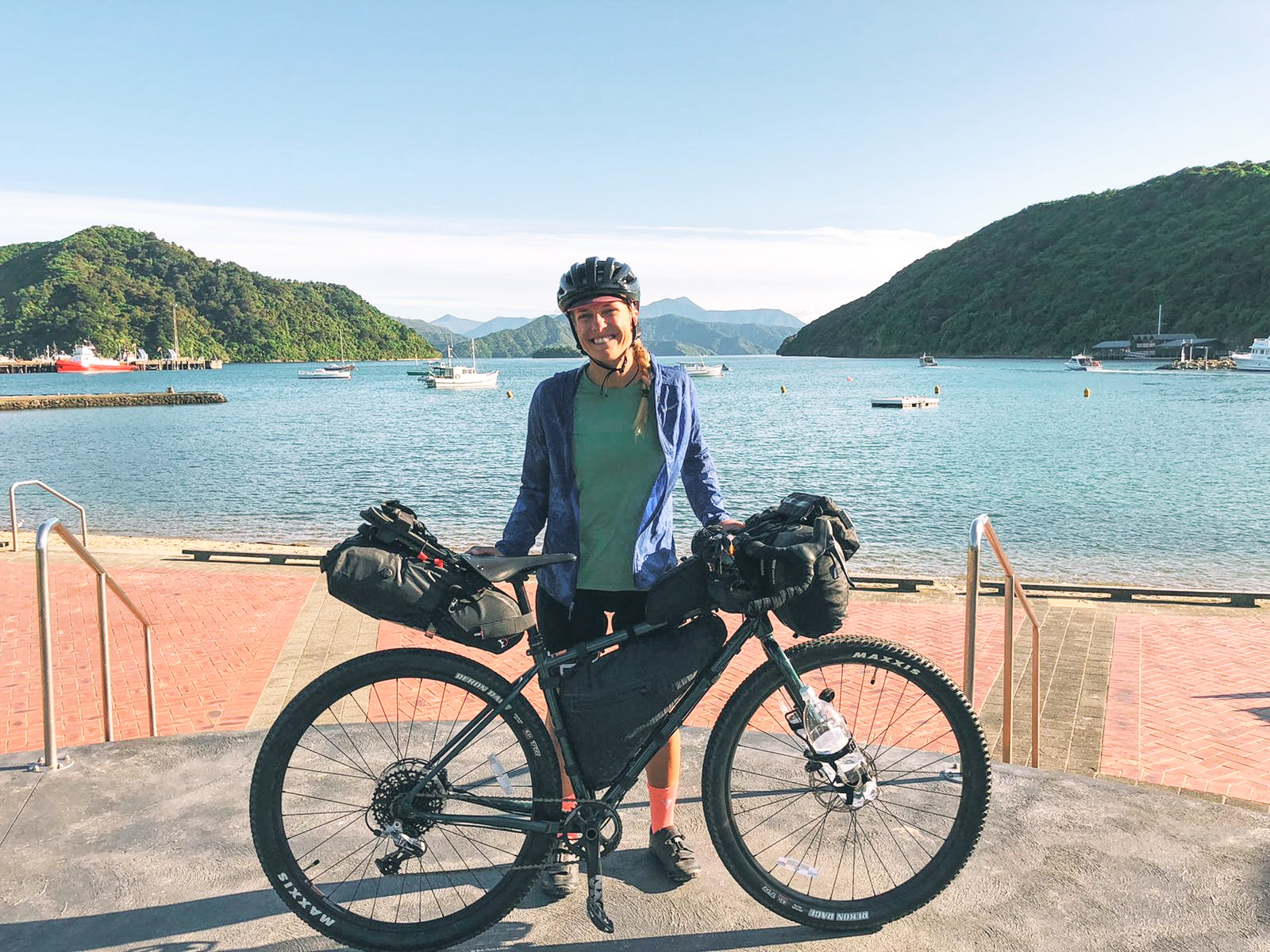

The Bike: a progression into bikepacking
Most exhilarating of all, this New Zealand trip would be the maiden voyage of my new trusty steed, a Kona Sutra LTD. In Africa, Jim had chosen to ride a Kona Sutra, and I couldn’t help but be envious of his rig next to my used Surly Disc Trucker that I had chosen for Europe and Africa. We outfitted our African rigs with a touring/bikepacking hybrid: classic Ortlieb back panniers, a full-frame bag hand sewn by Jim, a handlebar bag, and a Brooks B17 leather saddle. After Africa, I craved an adventurous steed that could take me beyond the confines of asphalt, without wanting to compromise the steel durability. Enter the Kona Sutra LTD– the bike of my dreams. The word is out about this bike. A category-shattering, steel drop bar 29er that’s meant for wide tires and long days. Dare I say, it’s the ultimate adventure rig. I couldn’t wait to release this beast into the gravel, dirt, and country roads of New Zealand.
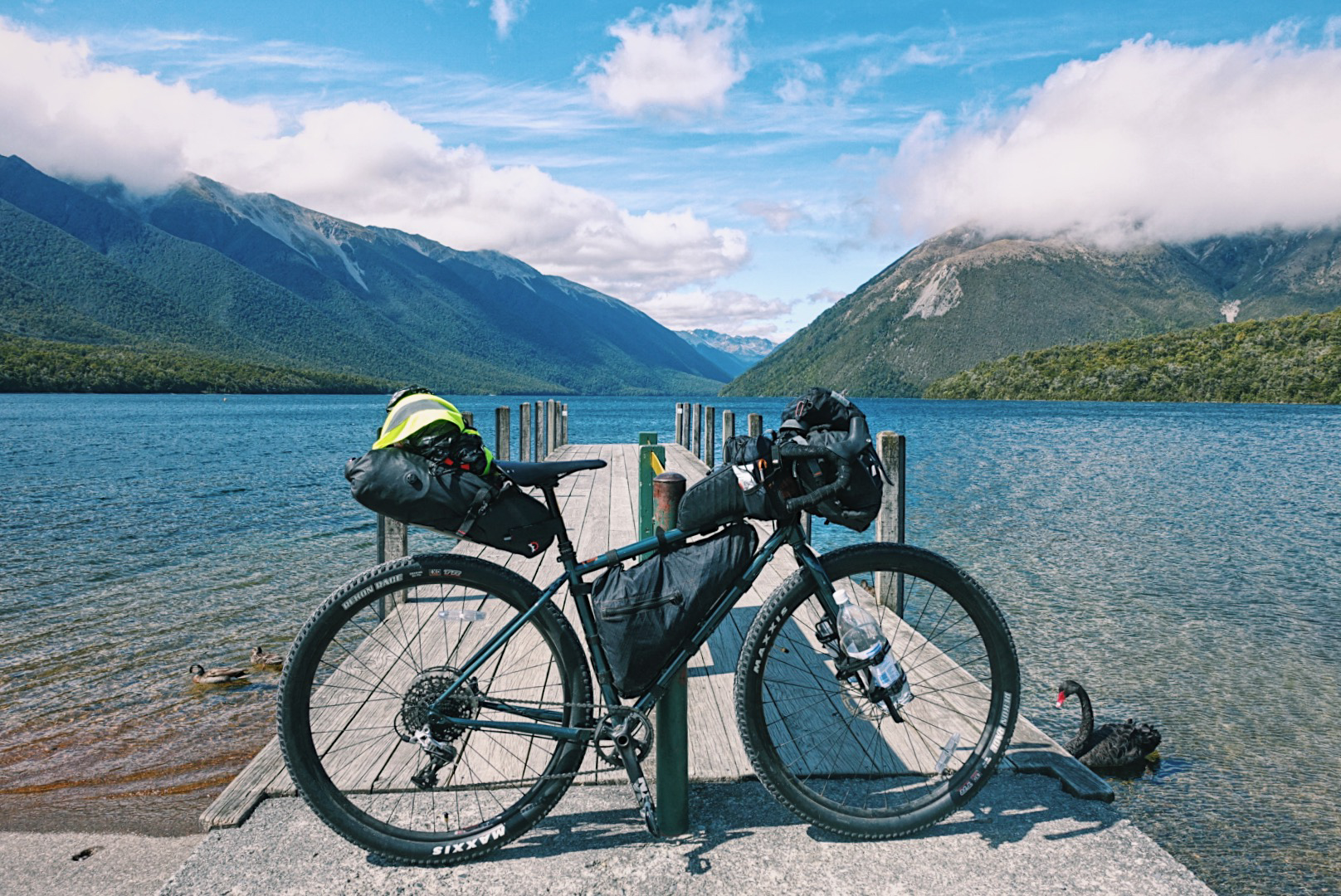
There are a few key features of this bike that make it dreamy for expeditions. Most notably, the burly construction of the Kona Cromoly steel frame coupled with the 29” tire size creates a smooth ride on the clouds. I’ve never felt this sense of comfort before when riding a steel vessel, especially on gravel earth. Then there’s the added bonus of a seat post dropper, a feature familiar to mountain bikers, but otherworldly to cycle tourists. I quickly became a fan of this add-on when ascending or resupplying around town when I rocked flip-flops instead of clip-ins and needed a quick seat height adjustment. I was curious about the 1x drivetrain, and instantly understood what the hype was all about: simplicity and weight-saving, without sacrificing gear options. For reasons that will be revealed in my route, I decided to leave on the stock Maxxis Rekon Race 29×2.25” tires. The one change I did make was swapping the saddle out for a Brooks Cambium carved, which was a fantastic gravel evolution to my previous leather saddle.
The Route: New Zealand’s South Island
The Tour Aotearoa is a well-known bikepacking route that spans the length of New Zealand. Launched in 2016 by Jonathan Kennett, the tour mixes cycle trails, gravel paths, and pavement to wind from Cape Reinga in the north to Bluff in the south.

With two weeks up my sleeve, I decided to roughly stick to the South Island’s Tour Aotearoa track for my ride. Although I try to have a rough outline of my start and finish, I’ve adopted a motto that seems to work best for improvisation on the road: no fixed route.
The Gear Shakedown
With the rough route settled, I knew a few things for certain. My bikepacking bags left much less room than the back panniers. In an effort to be more minimal and lightweight, I swapped my Sawyer squeeze water filter for aqua tabs. Examining my route it looked as though I would be at an established campground most nights, which meant I could ditch my cooker and gas, opting to use the campground kitchen instead. Originally I had intended to bring two pairs of chamois and an extra shirt, but the route’s infrastructure allowed me to regularly wash my clothing. The final decision was to leave my beloved Bedrock Cairn sandals behind in place of cheap lightweight flip-flops. Known in the hiking world as a shakedown, this process of omitting extra pieces of gear cleared the necessary room I needed in my bags for daily food and snacks.
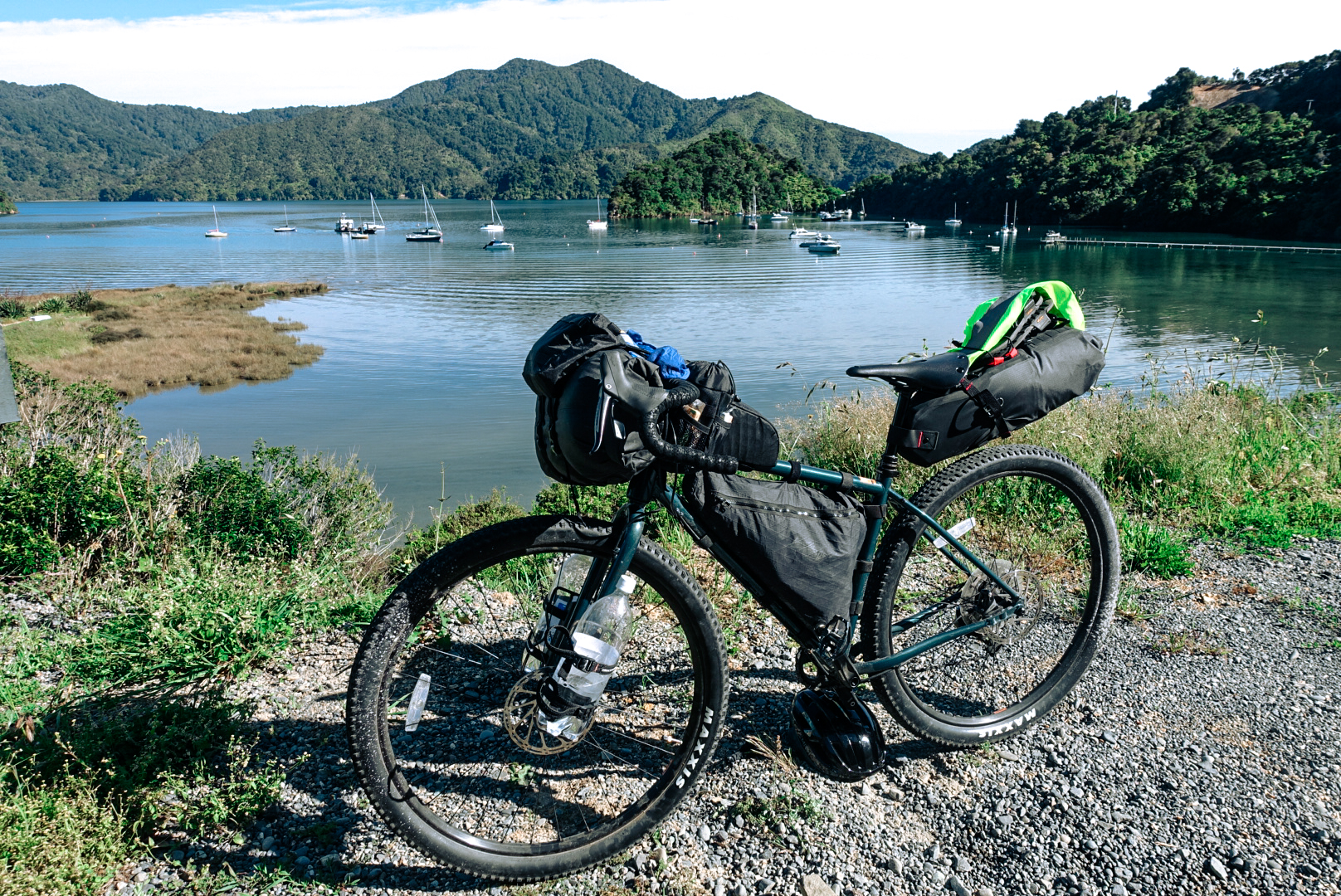
The Bike Bags
Handlebar: Oveja Negra front end loader dry bag mount + Sea to Summit big river dry bag + Oveja Negra lunchbox handlebar bag 3L

Cockpit: 2x Revelate mountain feed bags with each 1L + Oveja Negra XL top tube bag that fits 8 candy bars
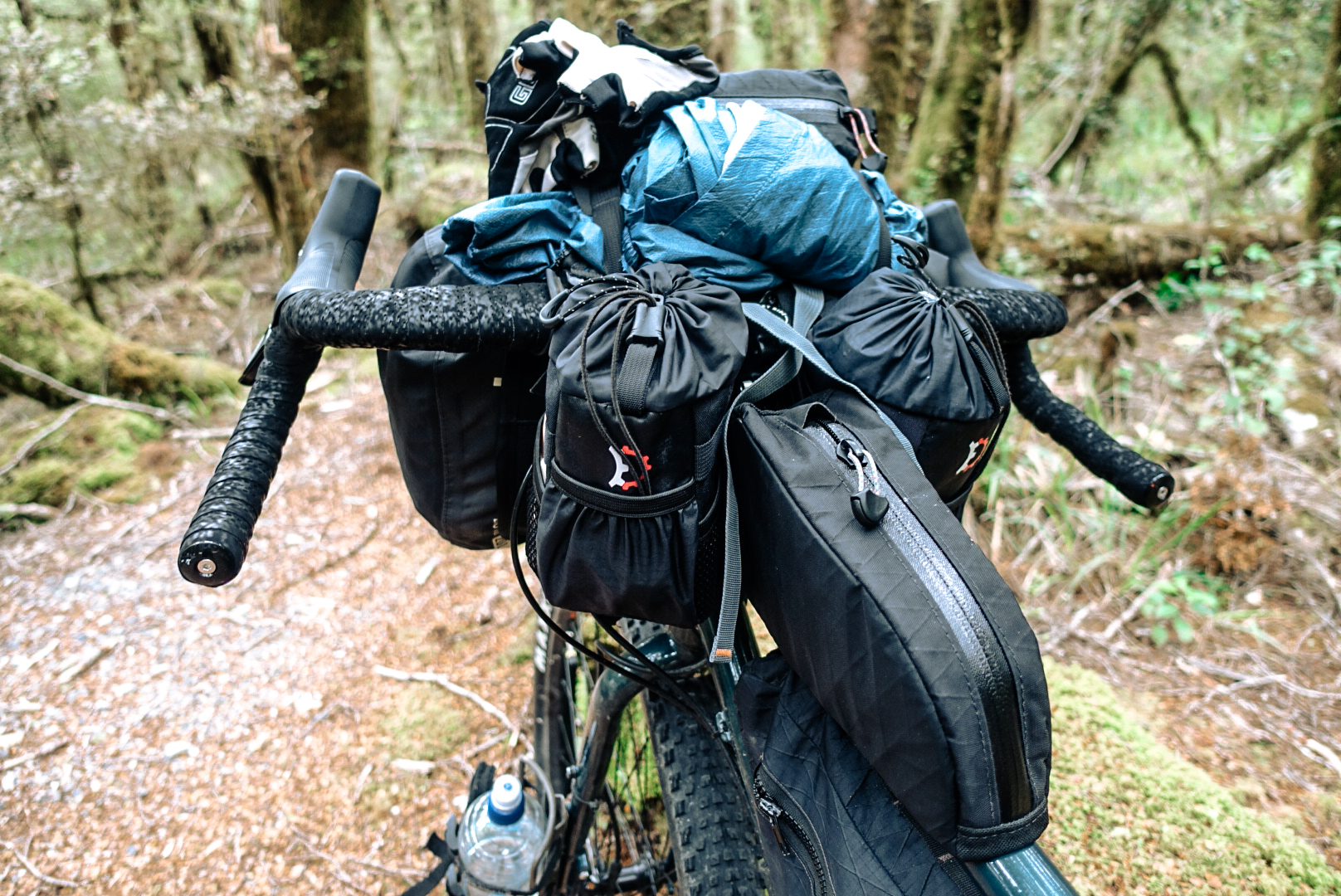
Frame: custom full frame handmade bag by my partner Jim, fits around 7L
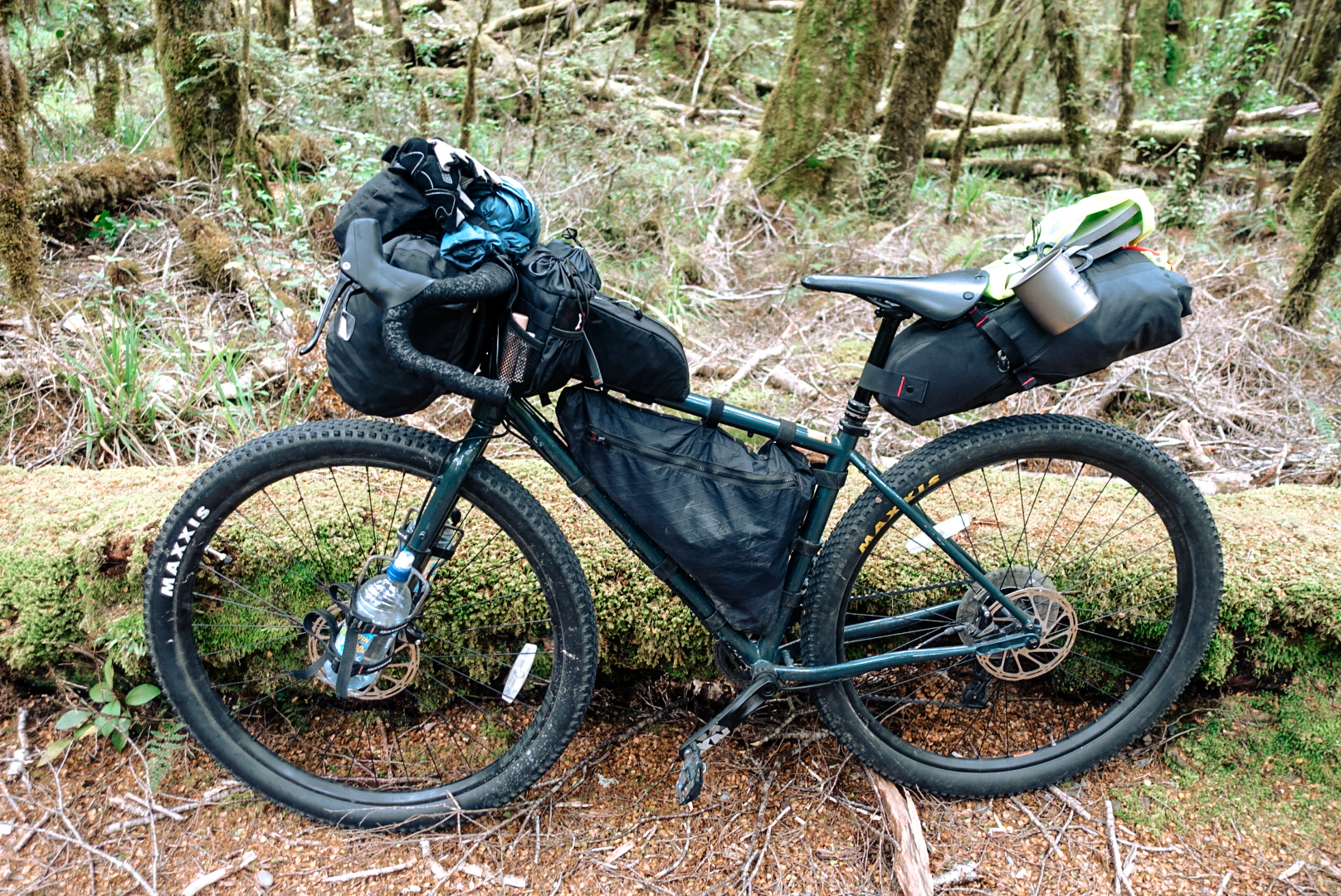
Saddle: Revelate spine lock 10L
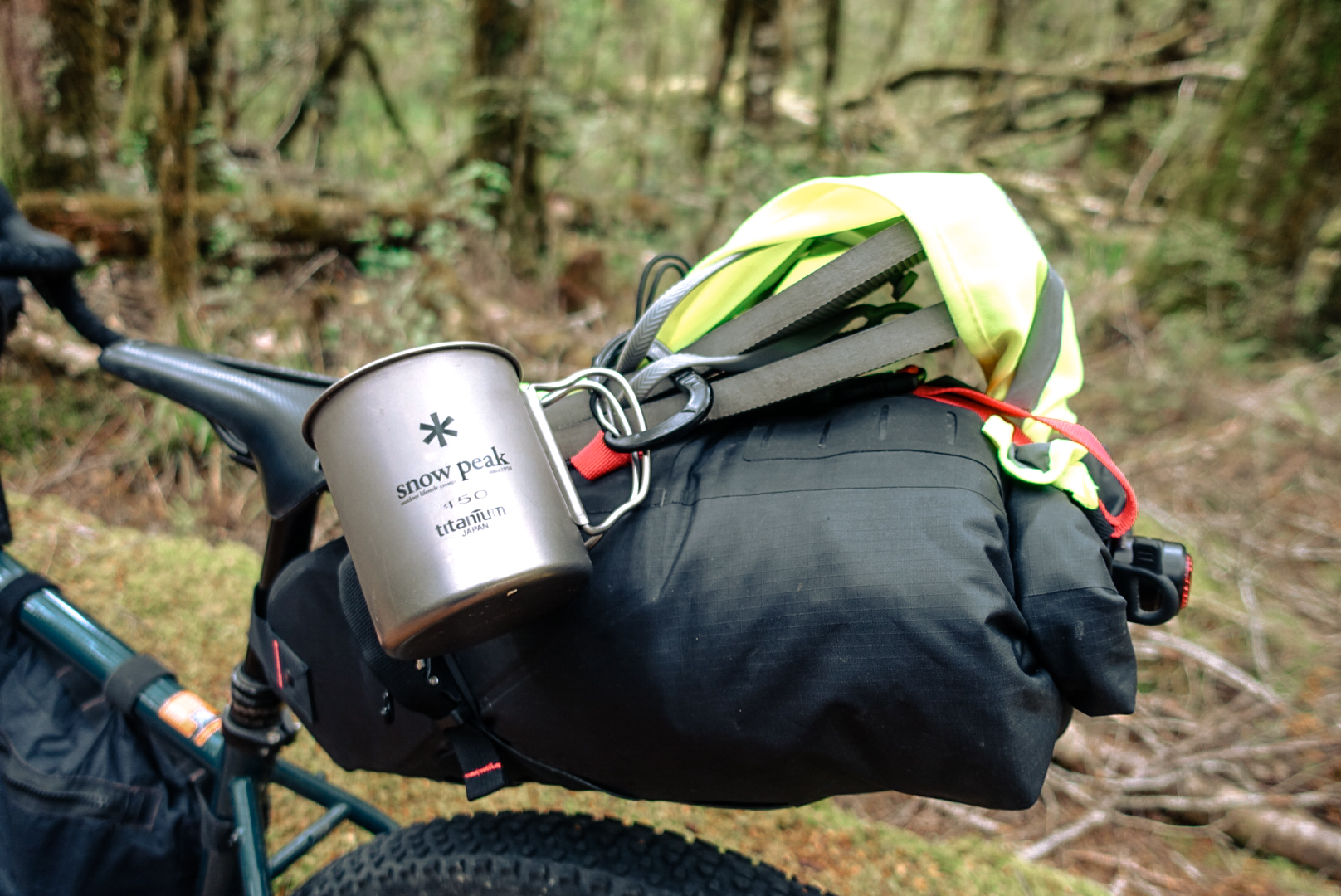
Front forks: 2x Blackburn outpost cargo cages for hydration bottles

Pack List
Camping: Big Agnes Tiger Wall UL2 with an added Tyvek footprint that I always travel with to protect my Thermarest Neo Air X Lite sleep pad from punctures. Enlightened Equipment 10-degree quilt and my Trekology inflatable pillow (luxury item) completed my sleep system. I prefer a free-standing tent, but others might opt for a tarp or bivvy on a tour similar to the Tour Aotearoa. I met other TA cyclists who just carried an emergency bivvy and planned most nights to crash in a cabin or motel room. Needless to say, sleep systems can range with budget and comfort levels. Cooking-wise I ditched my stove and only carried my Snowpeak titanium 450 mug and spork.
Clothing: Riding in my Patagonia daily capilene long sleeve (brutal sun exposure down in NZ so I chose to cover up), Smith Persist helmet, Goodr sunglasses, Patagonia houdini windbreaker, cotton cycling cap, chamois, bright socks, cheap cycling gloves purchased from an Istanbul market. In my bags, I had my cheap flip-flops, Buff, Patagonia nano puff jacket, Frogg Toggs rain jacket, Icebreaker base layer top and bottom, spare cycling socks, and Brooks running shorts.
Electronics and Photography: I am a big fan of the compact and capable Sony RX100, so it came along on this journey, especially since it fit snug in my top tube bag. When combined with my iPhone X (which I also used for GPS), I found I could capture most vistas, but others might opt for the added weight and depth of field that a DSLR or mirrorless could provide. Lugging lenses along for a two-week, relatively quick ramble didn’t interest me much on this trip. I charged my devices with a 10,000mAh Anker power bank, but rarely needed it due to campgrounds and cafes.
GPS: iPhone X with a mix of Maps. Me and offline-marked Google Maps, plus the Tour Aotearoa PDF and paper official guide.
Maintenance and Tools: The trusty tool kit included a bike multitool with chain breaker, patch repair kit, spare tube, knife, super glue, zip ties, electrical tape, 3x tire levers, pump, shrader presta adapters, chain lube, and a rag.
Hydration: my two blackburn outpost cargo cages on my front forks provided enough room for up to 2L water bottles, but a few days in I realized towns were so close in proximity that I only needed 750mL water bottles up front. In my full-frame bag I always kept my 600mL water bottle for quick access while riding.
Other: Bug spray, Bronners castile soap, ½ a toothbrush and Tom’s toothpaste, ear plugs, bandaids, Rescue Remedy, Field Notes and pen, heaps of sunscreen and zinc, apple headphones with chord, Sea to Summit lightweight towel, and a rear blinking light + high-vis strip over my saddle bag for visibility with cars.

Final Review of the Set Up and Route
I’m convinced that the Sutra LTD was made for countries like New Zealand and routes like the Tour Aotearoa. I wouldn’t have changed anything with my setup. Even considering the heavy amount of pavement I encountered, the chunky 2.25” tires still proved worth it when they displayed their gravel-chomping skillset.
In terms of my bikepacking bags, the sturdy Revelate Spine Lock was a valuable addition and welcomed change from the hefty panniers. It took some time to get used to the heavy amount of gear and weight in the front of my bike with water on the front forks, three cockpit bags (2x feed bags, top tube bag), handlebar bag, and lunchbox. I made the mistake early on of packing too heavy of items in my handlebar area, and paid the price with difficulty in steering. Not something you want to deal with when cars are zooming past you on a narrow shoulder mountain road. I learned the art of packing with my set up at the front and used my Oveja Negra lunchbox for daily snacks and accessible food grabs. My full frame bag was more dedicated toward heavy bike maintenance tools, water, and power bank, as the central weight helped even things out on my bike. For short trips like the Tour Aotearoa I would stick with a saddle bag, but for anything more remote where there’s a 3+ day food carry, I would investigate a lightweight rear rack and small pannier options.
Somewhere along the wine country in the north, the West Coast Wilderness Trail, Glacier Highway into Haast Pass, Crown Range over the adventure playgrounds of Wanaka and Queenstown, boarding the historic century-old steamboat across the lake, and the grand finale of a dreamy gravel track into Mavora Lakes, I fell head over heels for my bikepacking rig.
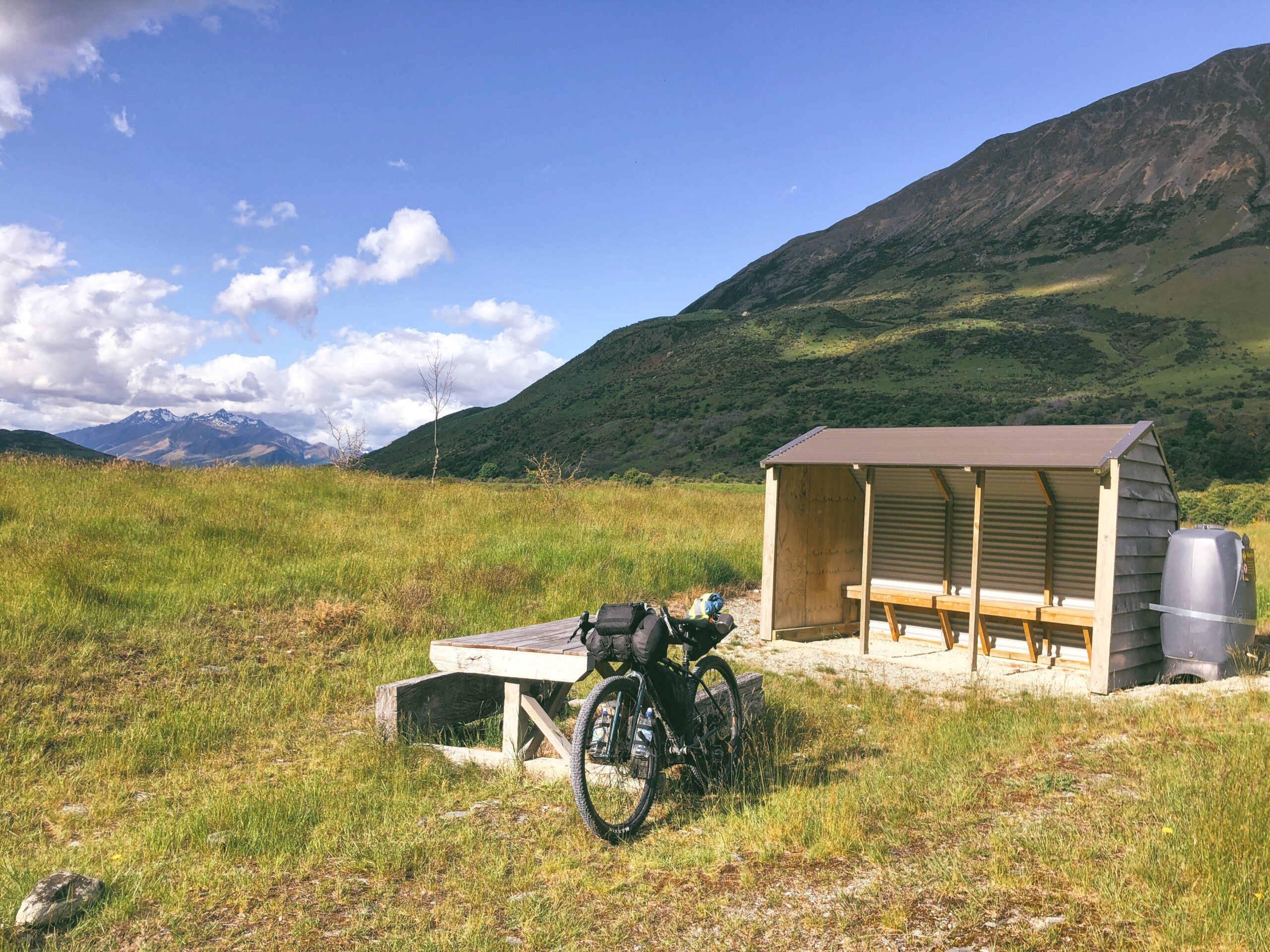
On the final morning riding into Bluff I received my first and only flat tire on the entire trip. Cycling gods laughing, I fixed my puncture and continued to the final signpost marking the land’s end. I savored the sufferfest that I had endured the last two weeks, while already scheming gear changes and route ideas for the next bicycle voyage on the horizon. Onward…
